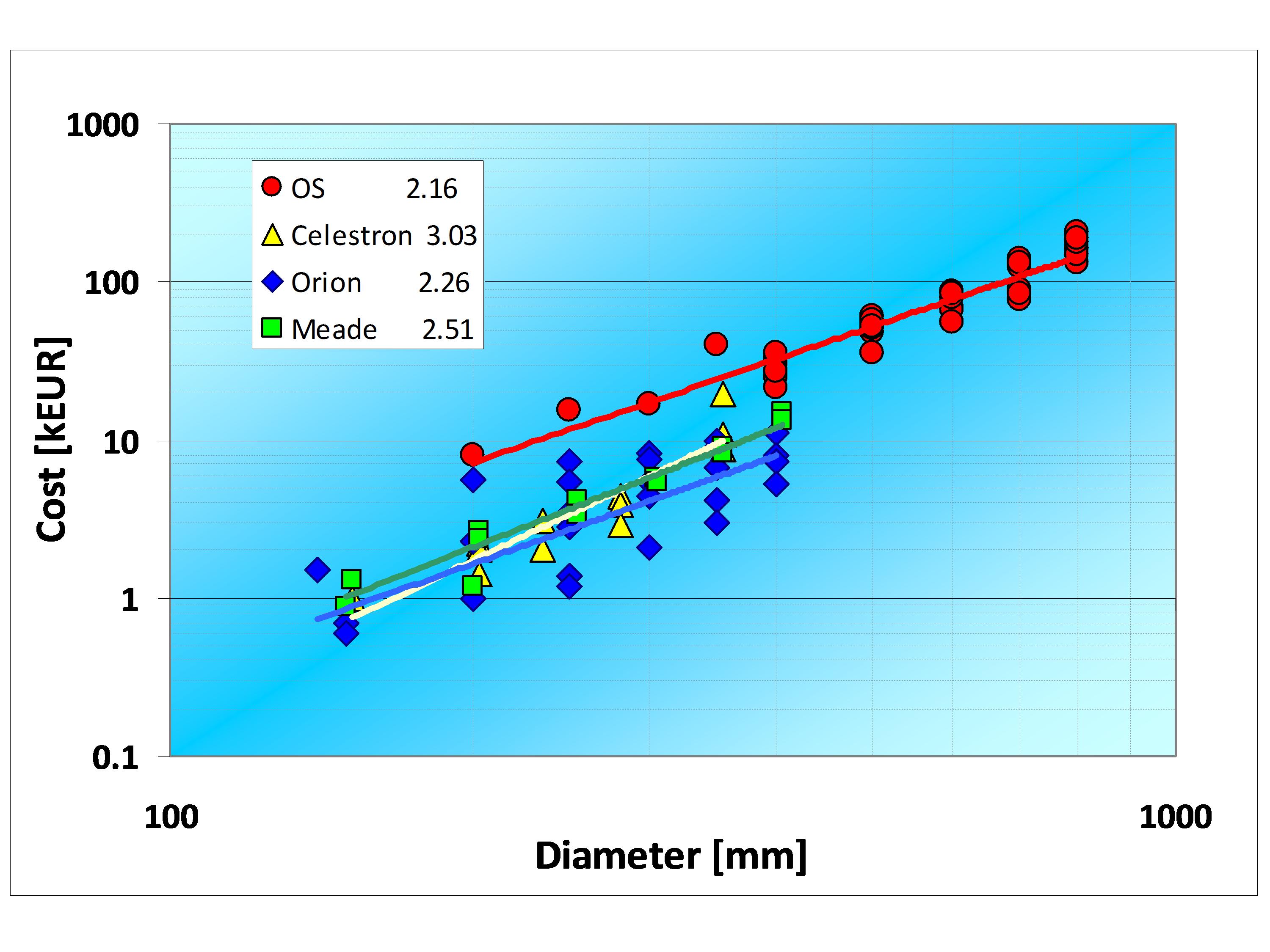Summary:
In this study we tackled a proxy approach to wide-field large monolithic telescopes in terms
of composite assembly of smaller instruments. As a conveniently "fast" f-number is the ultimate
parameter to efficiently carry out inspection of large portions of sky, we show that a telescope
array can provide a cost-effective solution, as a factor of √N reduced f-number can be achieved
when combining N (similar) telescopes, each of diameter darray, to synthesize an equivalent
monolithic diameter Dmono=√N × darray.
A cost model is developed, in this regard, by comparing the COTS figures for telescopes up to a
metric size as supplied by primary international manufacturers. If a standard cost vs. diameter
relationship is assumed, in the form C∝Dn, then data indicate that n=2.5±0.4.
In addition, a more realistic multi-parametric dependence is assumed, including the f-number,
in the form C∝(D3/f)m, with m=0.70±0.08. This eventually
leads us to estimate that cost of the optical tube assembly (OTA) for commercial telescopes scales
as C∝D2.10±0.24f-0.70±0.08.
Even considering the supplementary addition of CCD/CMOS detectors for a telescope array, a general
saving scheme confirms that any array solution with N≥4 telescopes, each with a diameter in excess to
30-40 cm, could be a competitive alternative to a bigger monolithic instrument of metric class
(or larger), mainly aimed at wide-field surveys.
|



